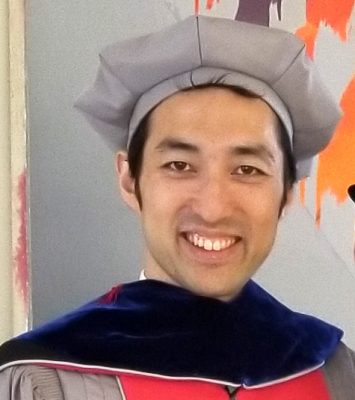
Three questions with Tetsuya Kaji, one of the first alumni of the new Interdisciplinary Doctoral Program in Statistics
Tetsuya Kaji was among the first to receive the interdisciplinary PhD in Statistics (IDPS) from our Statistics and Data Science Center. IDPS is designed for students currently enrolled in a participating MIT doctoral program whose work delves into 21st century statistics, using concepts of computation and data analysis as well as elements of classical statistics and probability within their chosen field of study — in Kaji’s case, Economics. He also holds an MA in Economics from the University of Tokyo.
Kaji works at the intersections of economics, statistics, and machine learning. His research is directed toward the development of practical solutions to applied econometric problems, statistical assessment of these solutions, and fundamental understanding of nonstandard econometric problems.
He joins the University of Chicago Booth School of Business as Assistant Professor of Econometrics and Statistics this fall. Before graduating, we asked him about his research and his time here at MIT.
1. What is the focus of your research/work? What sort of knowledge and disciplines does it bring together? How will it make an impact?
My doctoral research consists of three statistical topics in economics and finance. My first topic proposes a formal test of outlier robustness that is easy to implement in practice. For this, I develop the theory of integrable empirical processes, which heavily relies on advanced mathematics such as functional analysis. My second topic is about weak identification. Economists are often ambitious to try to estimate barely identified parameters, in which case they suffer very imprecise estimation. I provide a unified theory of this phenomenon and construct the most precise estimators for those parameters. I am hoping that it will facilitate collaboration between two separate fields in econometrics and statistics. My third topic concerns risk control in investment decision-making and banking regulation. Since true risk is not observable, practitioners use estimated risk as a substitute. However, it has not been known how to account for estimation error in order to control the true risk. My coauthor and I propose a method to control the true risk by knowing the precision of the estimated risk.
2. Why did you choose to get an interdisciplinary statistics PhD?
When I first came to the Economics department at MIT, I didn’t even think that I would do statistics. I took mathematics and statistics courses because I thought it would be my last chance to take time and study them rigorously. Then I was assigned my advisor because I did well in my second-year econometrics exam. After I decided to take on research in econometrics, the wave of deep learning arrived at MIT. EECS hosted a number of introductory courses and I attended a few, purely out of curiosity. Now my research agenda includes an application of machine learning in econometrics. Interdisciplinary statistics PhD was, after all, a natural consequence of my attempts to make the best use of MIT.
3. Share something about yourself: What are your post-graduation plans? What did you enjoy most about the MIT experience? What do you do in your spare time?
I will be joining Chicago Booth as a junior faculty in econometrics and statistics. It is a great environment for me as they have a quite diverse set of faculty, ranging from econometrics to applied mathematics, statistics, and computer science. My research agenda also spans a wide range of disciplines, so I look forward to opportunities for collaborating with them.
The most valuable experience at MIT for me was its intellectual environment, especially that with my advisor, Anna Mikusheva. Anna and I met weekly on a regular basis, regardless of whether I had much progress to share. She made every effort to make an intellectually open environment for me. We asked countless “stupid questions” to each other and shared the most candid opinions with each other. Meetings with her were actually some of the most relaxing and enjoyable moments in my graduate life.
I have also been a member of the MIT Figure Skating Club for 5 years. MIT is actually the best place to start skating. Somerville has a free rink, Boston has a great skating club, and MITFSC has the warmest, friendliest, welcoming culture for new members. Regularly seeing a lot of undergraduate/graduate friends outside of the department helped me refill my energy.




